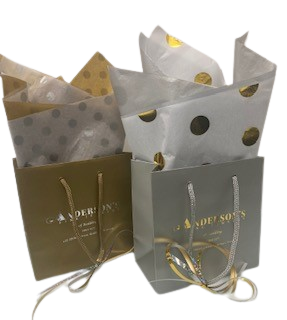
With more people learning about their availability and affordability, color lab-grown diamonds are becoming an increasingly popular choice among jewelry buyers. These stones offer an appealing alternative to traditional diamonds, as they can be used to create some beautiful and unique pieces. The following guide provides answers to a few common questions consumers have about these gems.
A Detailed Look at Color Lab-Grown Diamonds
What is a color lab-grown diamond?
Color lab-grown diamonds are stones that have been made in a laboratory setting and have a distinct color to them rather than being colorless. These diamonds come in all shapes and sizes and can feature various hues, including yellow, blue, pink, orange, green, black, and brown. They are considered real diamonds since they imitate the physical and chemical properties of those that are naturally mined.
How are color lab-grown diamonds formed?
Lab-grown diamonds are formed when impurities become trapped inside the stone during the crystallization process. Once exposed to these foreign substances, the diamond will begin to show color. In a laboratory setting, impurities are intentionally introduced and can be controlled to achieve certain colors.
The different colors are a result of specific compounds that have been added. For example, yellow, orange, and brown is created by mixing nitrogen with carbon, blue develops when boron is combined with carbon, and green comes from exposure to gamma radiation. Generally, the higher the number of impurities introduced, the more intense the color will be.

Does color affect the diamond’s value and price?
As with all diamonds, the value and price of lab-grown stones is based on the 4Cs – color, clarity, cut, and carats. Therefore, the color of a lab-grown diamond can impact its worth. Typically, the more vibrant the color, the more valuable it will be. However, the other factors will play an important role as well. Additionally, pink, blue, and green are the rarest colors and will significantly influence price.
What should I consider when buying a color lab-grown diamond?
First, it’s important to think about the metal you’ll be pairing the diamond with. Some colors will look better with yellow gold, silver, or rose gold than others. Next, consider the shape of the stone. Certain shapes will hold onto the color whereas others will shine more light through, causing the saturation to get washed out. You also want to review grading reports for a lab-grown diamond to verify the treatments it has undergone.
If you’re looking to give your jewelry collection a boost, visit Anderson’s Fine Jewelry to explore the wide variety of color lab-grown diamonds available. We’re proud to work with the most reputable industry brands to provide our customers high-quality products in a broad range of styles. Our experienced jeweler and professional staff can assist you in finding just the right stone to bring your custom-design ideas to life. Call (530) 223-3443 to schedule a consultation or browse our website for inspiration.



